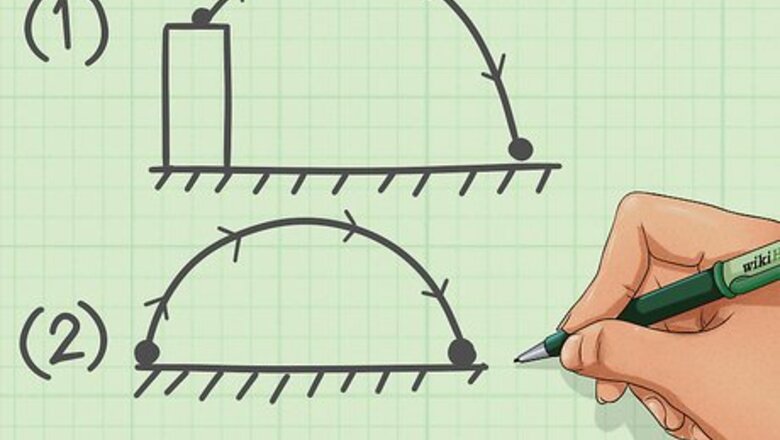
views
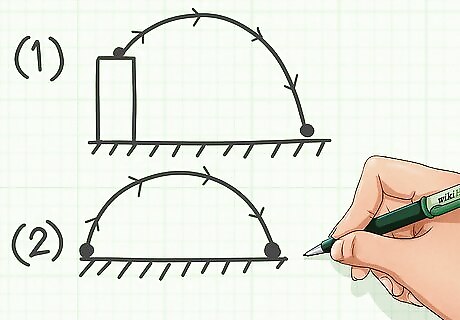
Determine what type of problem it is. There are two types of projectile motion problems: (1) an object is thrown off a higher ground than what it will land on. (2) the object starts on the ground, soars through the air, and then lands on the ground some distance away from where it started.
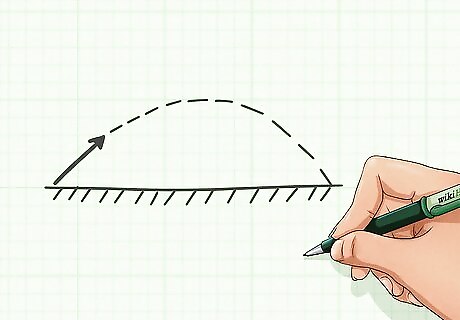
Draw a picture. Draw out the scenario so you can see how the object travels.
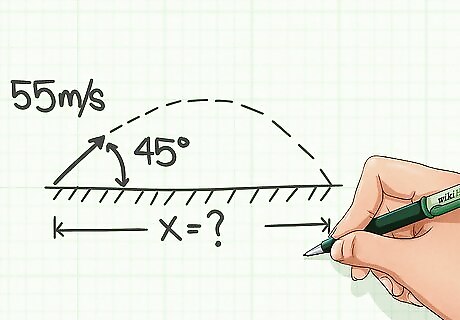
Label the distances and velocities given in the problem on your picture. You should be able to look at the picture and have a clear understanding of the path and values given in the problem.

List all your variables. It may seem unnecessary if you have your picture properly labeled, but keeping all your variables together in a list will help show what you are missing. These variables should include your final velocity, initial velocity, distance, acceleration, and time. Since this is projectile motion problem, however, there are different values for the object in the x and y direction. This means you will need to make two lists. It is important to read the question carefully and label your values accordingly.
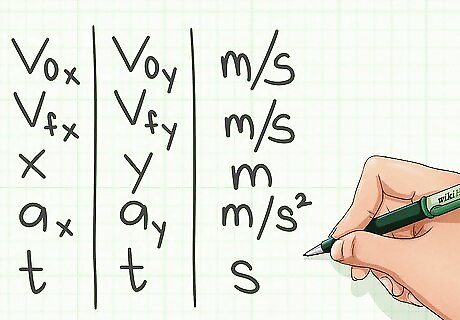
Make sure the units match. Convert your units into meters and seconds so that you can use constants to solve the problem.
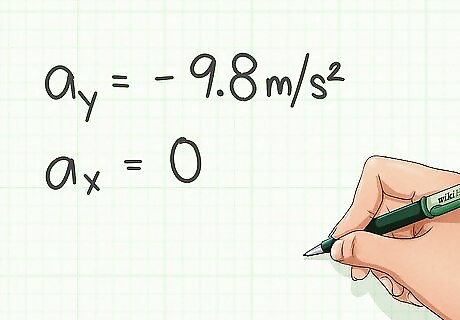
Use physics constants to fill in some unknown variables. In the y direction, acceleration will always be -9.8m/s^2 since there is always acceleration due to gravity. The initial velocity in the y direction will always be 0 m/s as well. In the x component list, your initial and final velocities will be the same, since there is no new force acting on the object, meaning your acceleration will be 0 m/s^2.
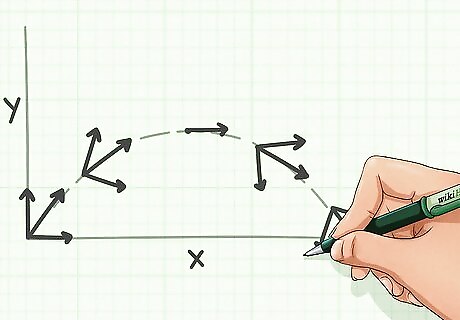
If your problem is set up like scenario (2), make sure to use the angle given to break up the initial velocity into x and y components. In this case, the y direction initial velocity is not 0 m/s, but instead it is Vi*sin(angle). The initial velocity in the x direction is Vi*cos(angle). If your problem is set up like scenario (1), the initial velocity is simply what is given.
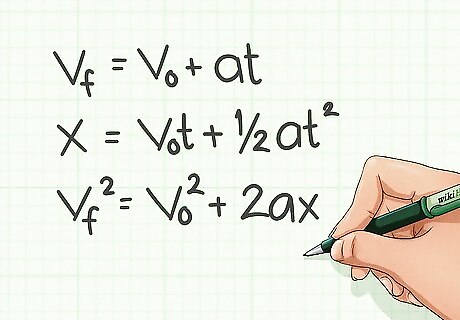
Pick a kinematic equation to use. Once you have most of your variables listed, pick an equation that will allow you to solve for the desired variable. The picture shows equations you can use when you are missing a certain variable.

Find the similar variables. Although the velocities and distances of the x and y components are often different, the time it takes will always be the same in the x and y direction. If you are stuck, try solving for time in one component so you can use it to solve for the other component.
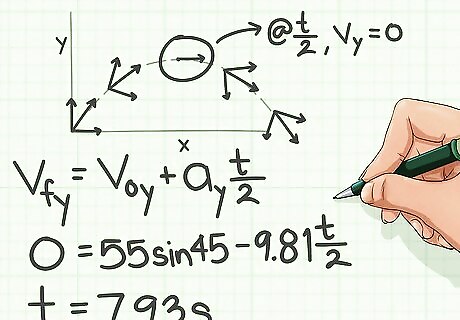
If there is not an equation you can use to solve for your desired variable, use a kinematic equation and solve for a different variable. Solve for as many missing variables as you can to find your solution.
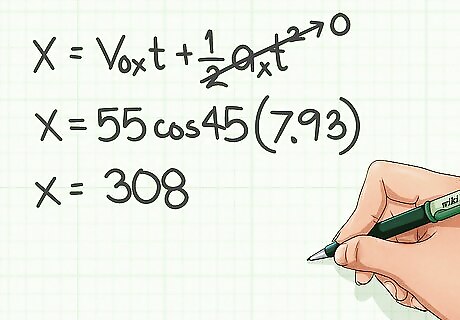
After finding the intermediate variables, use them to solve for your desired variable. Use a final kinematic equation to solve for the answer.
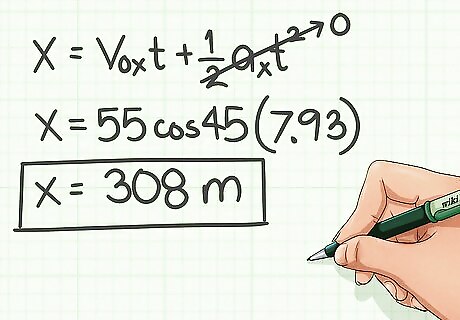
Make sure you include units and draw a box around your answer.




















Comments
0 comment